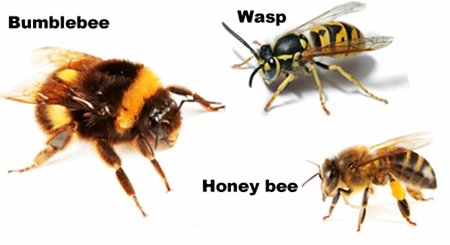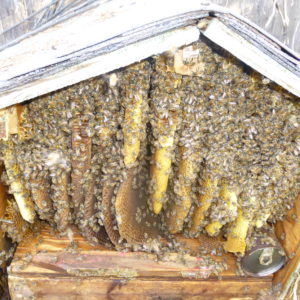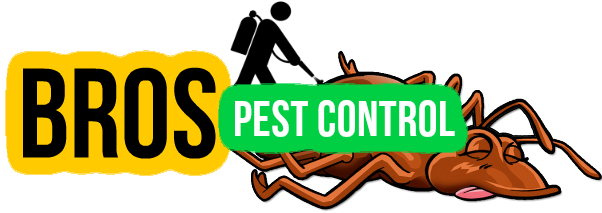Bee Removal East Palo Alto, CA | Wasps, Hornets, Yellow Jackets
East Palo Alto Safe Bee Removal & Extermination
 Are you looking for bee removal East Palo Alto, CA? Bro’s Pest Control is your connection to safe bee removal and extermination services. Exterminators within our network specialize in: wasp control, hornet control, bee swarm removal and bee removal. Pest control services can also include sealing off the entrances and exits, repairs from hive and damage, as well as traps. Bee’s can pose danger, especially if a loved one is allergic. Contact Bro’s Pest Control today to control your bee problem in the East Palo Alto area.
Are you looking for bee removal East Palo Alto, CA? Bro’s Pest Control is your connection to safe bee removal and extermination services. Exterminators within our network specialize in: wasp control, hornet control, bee swarm removal and bee removal. Pest control services can also include sealing off the entrances and exits, repairs from hive and damage, as well as traps. Bee’s can pose danger, especially if a loved one is allergic. Contact Bro’s Pest Control today to control your bee problem in the East Palo Alto area.
For Bee Control East Palo Alto, California Call, 1-888-497-9069
Specialized Bee Removal & Extermination
Bro’s Pest Control professionals can help you with all different bee problems including:
 Removal of hives, bee swarm removal, yellow jacket removal, hornet removal, bumble bee removal and various of bee removal jobs. Bee removal East Palo Alto, CA experts will come out to your home or business and remove unwanted bee’s safely and at a reasonable price. Same day appointments for bee removal can be scheduled, if needed. Ready for bee control East Palo Alto, CA? Contact us today by calling 1-888-497-9069.
Removal of hives, bee swarm removal, yellow jacket removal, hornet removal, bumble bee removal and various of bee removal jobs. Bee removal East Palo Alto, CA experts will come out to your home or business and remove unwanted bee’s safely and at a reasonable price. Same day appointments for bee removal can be scheduled, if needed. Ready for bee control East Palo Alto, CA? Contact us today by calling 1-888-497-9069.
Bee, Wasp & Hornet Treatment
 Bee, wasp or hornet treatment East Palo Alto, CA will require one of our bee specialists to come out to your home to perform a free inspection. They will arrive fully equipped to eliminate your bee issue. The bee exterminator will identify the location of the nest, depending on the type of stinging insect problem you have, and eliminate/remove the problems to protect your family’s health and safety. In the case of a hornets nest, the technician will treat the nest and return to remove it after insuring that all the pests have been killed.
Bee, wasp or hornet treatment East Palo Alto, CA will require one of our bee specialists to come out to your home to perform a free inspection. They will arrive fully equipped to eliminate your bee issue. The bee exterminator will identify the location of the nest, depending on the type of stinging insect problem you have, and eliminate/remove the problems to protect your family’s health and safety. In the case of a hornets nest, the technician will treat the nest and return to remove it after insuring that all the pests have been killed.
Bees are flying insects closely related to wasps and ants, known for their role in pollination and, in the case of the best-known bee species, the European honey bee, for producing honey and beeswax. For bee removal East Palo Alto, CA — contact us today!
Bee Extermination East Palo Alto, California
 Assuming the bee's in question are not honeybee's, a Bro's Pest Control expert can exterminate them. Every year, beekeepers are called upon to give advice regarding the removal of honey bees (and other insect pests) from homes and buildings since honey bees are NOT to be exterminated. Honey Bee removal on the other hand, includes relocating the bee's to a different location. If you have a bumble bee, wasp or yellow jacket bee problem in East Palo Alto, CA -- then extermination can be done. For wasp, bumble bee, hornet or yellow jacket extermination East Palo Alto, CA -- please get in touch with Bro's Pest Control today!
Assuming the bee's in question are not honeybee's, a Bro's Pest Control expert can exterminate them. Every year, beekeepers are called upon to give advice regarding the removal of honey bees (and other insect pests) from homes and buildings since honey bees are NOT to be exterminated. Honey Bee removal on the other hand, includes relocating the bee's to a different location. If you have a bumble bee, wasp or yellow jacket bee problem in East Palo Alto, CA -- then extermination can be done. For wasp, bumble bee, hornet or yellow jacket extermination East Palo Alto, CA -- please get in touch with Bro's Pest Control today!
East Palo Alto, California
East Palo Alto (abbreviated E.P.A.) is a city in San Mateo County, California, United States. As of the 2010 census, the population of East Palo Alto was 28,155. It is situated on the San Francisco Peninsula, roughly halfway between the cities of San Francisco and San Jose. To the north and east is the San Francisco Bay, to the west is the city of Menlo Park, and to the south the city of Palo Alto. Despite being called "East" Palo Alto, this is a misnomer, as the city is precisely due north of Palo Alto. While often incorrectly assumed to be part of the city of Palo Alto,[4][5] East Palo Alto has always been a separate entity since its founding as an unincorporated community. It is also in San Mateo County, while Palo Alto is in Santa Clara County. The two cities are separated only by San Francisquito Creek and, largely, the Bayshore Freeway (the vast majority of East Palo Alto is northeast of the freeway, while all of the residential part of Palo Alto is southwest of the freeway). The revitalization projects in 2000, and high income high-tech professionals moving into new developments, including employees from Google and Facebook, have begun to eliminate the cultural and economic differences between the two cities.[6] East Palo Alto and Palo Alto share both telephone area codes and postal ZIP codes.
43% of East Palo Alto's residents were African Americans in 1990,[7] which was the result of redlining practices and racial deed restrictions in Palo Alto.[8]Latinos now constitute about 65% of the total population, while the proportion of African Americans has decreased to about 15%. A small minority of Pacific Islanders also reside in East Palo Alto, most of Tongan, Samoan and Indo-Fijian origin.[citation needed]. East Palo Alto has the largest concentration of Pacific Islanders of any American city or town outside of Hawaii[citation needed].
Pesticides vary in their effects on bees. Contact pesticides are usually sprayed on plants and can kill bees when they crawl over sprayed surfaces of plants or other areas around it. Systemic pesticides, on the other hand, are usually incorporated into the soil or onto seeds and move up into the stem, leaves, nectar, and pollen of plants.[1]
Of contact pesticides, dust and wettable powder pesticides tend to be more hazardous to bees than solutions or emulsifiable concentrates. When a bee comes in contact with pesticides while foraging, the bee may die immediately without returning to the hive. In this case, the queen bee, brood, and nurse bees are not contaminated and the colony survives. Alternatively, the bee may come into contact with an insecticide and transport it back to the colony in contaminated pollen or nectar or on its body, potentially causing widespread colony death.[2]
